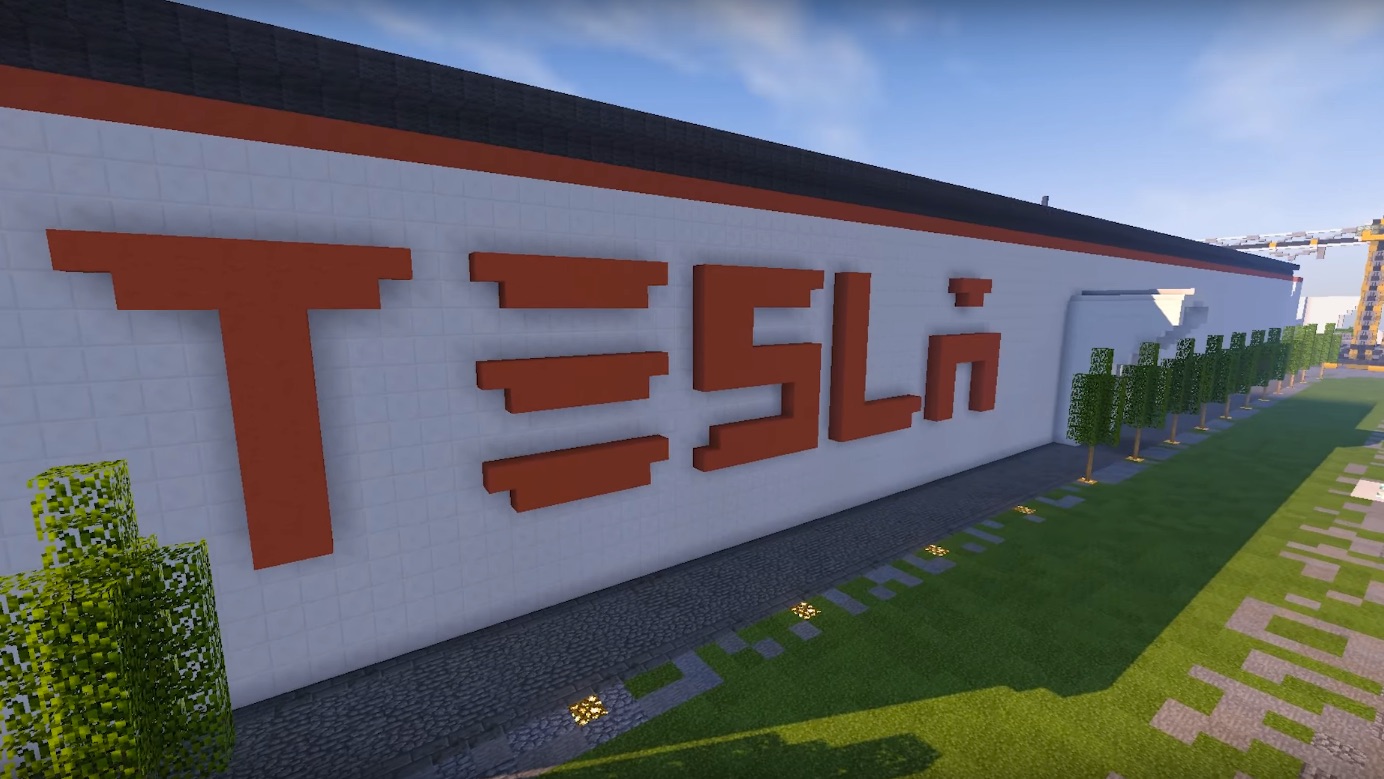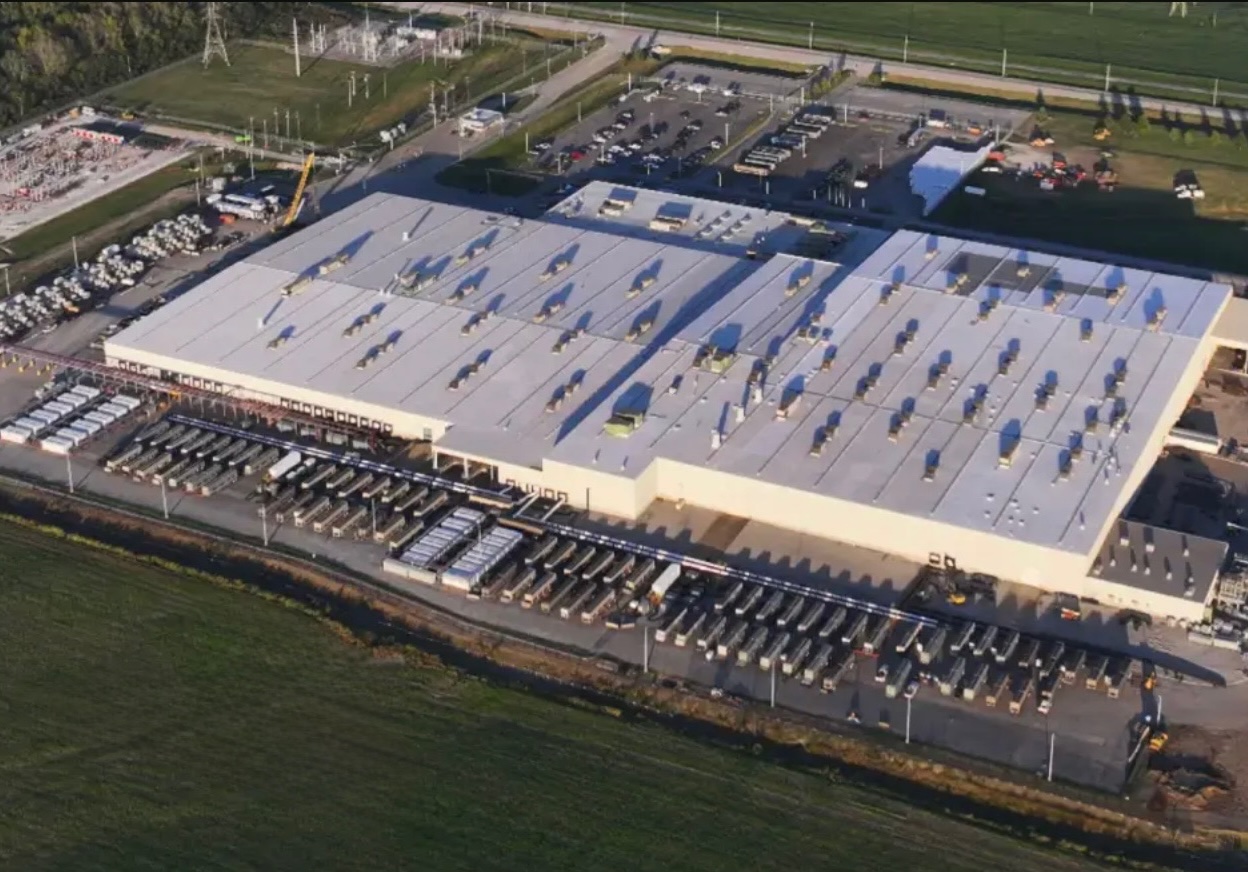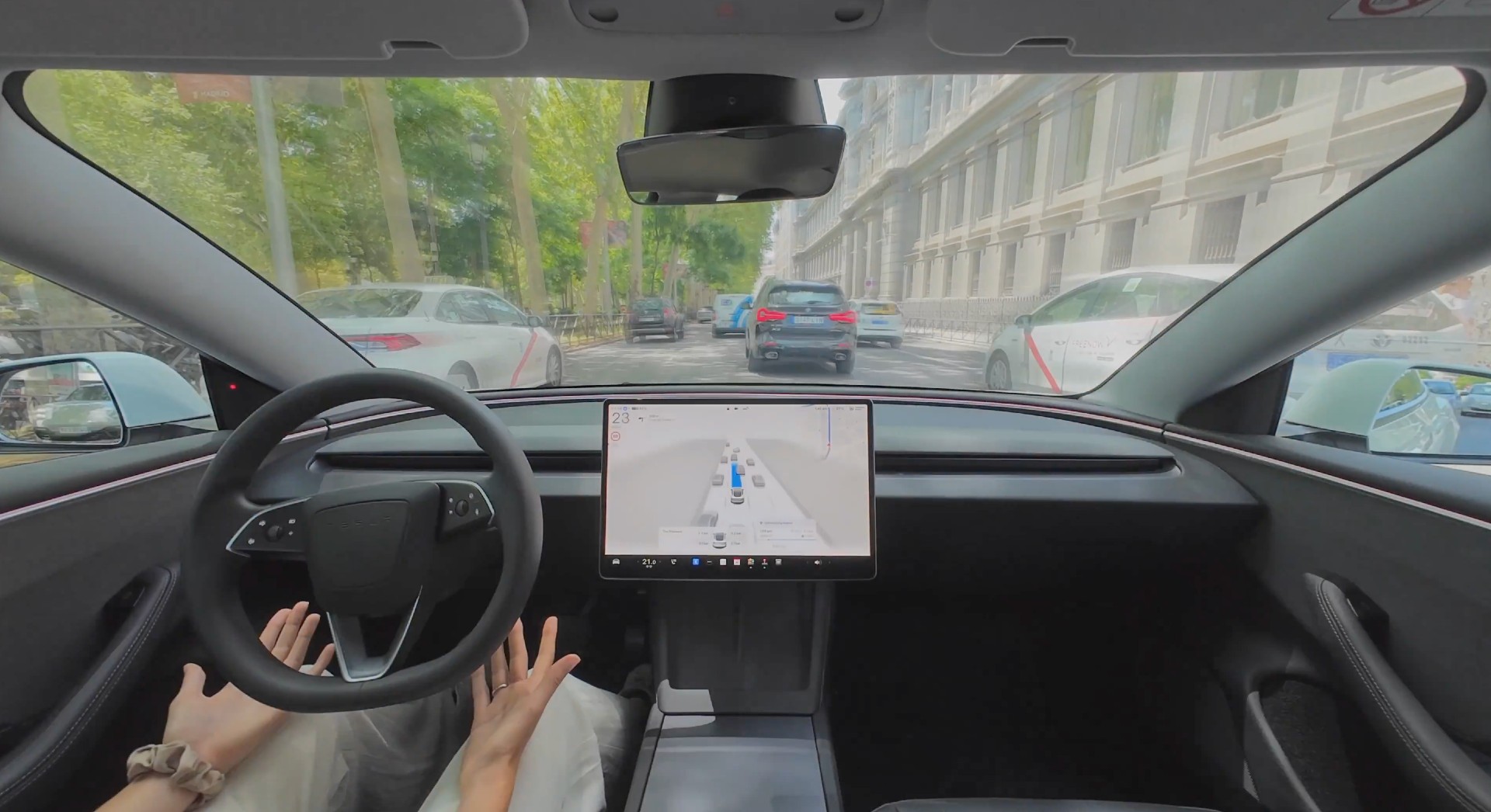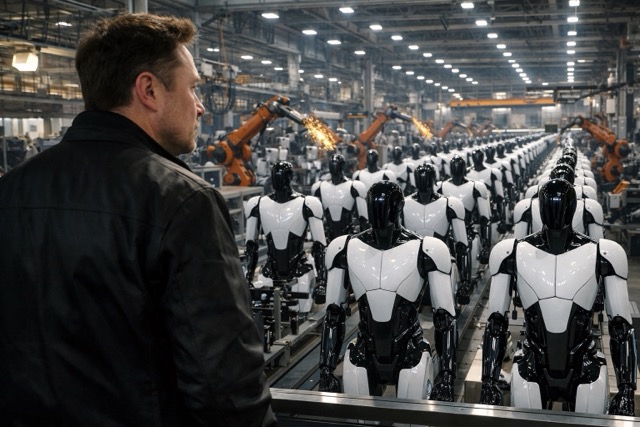News
Tesla Gigafactory in Lithuania reimagined within Minecraft game

Have you ever wanted something so badly that you doodled and thought and chatted about it nonstop? Vladas Lašas, a famous Lithuanian entrepreneur, is one of those dreamers turned pragmatists. And his vision is about a Tesla Gigafactory coming to his country.
Lašas wrote last month in his column at Verslo žinios, the main Lithuanian business daily, that Tesla Motors’ CEO Elon Musk should search no further than Lithuania as a European location to build its second Gigafactory, the lithium ion battery production plant.
The column has inspired a movement for what is being heralded as a “beauty contest” in Lithuania. Representatives moved the idea forward, agreeing that full support by the government, non-conventional solutions, and a well-prepared offer were what was needed to bring a major investment such as Tesla’s Gigafactory to Lithuania. With Lašas’ inspiration, enthusiasts, a Facebook meetup, a panel discussion with top government officials, a communication hackathon with 1K EUR prize, and a budget to implement the winning idea have all been part of the larger plan to convince Musk that theirs is the right country at the right time for a Gigafactory.
Sixty young creative designers formed 13 teams to work on the ideas how to pitch Lithuania to Tesla. And now one of those “non-conventional solutions” is hitting YouTube screens all over the globe. Titled, “Minecraft Tesla Gigafactory in Lithuania,” the YouTube captures how, in two days, a team of Lithuanians did what it took Tesla to do in two years: build a Gigafactory. Of course, the caveat is that the Lithuanians have designed a Minecraft Gigafactory, not an actual production facility. Forty Minecraft builders completed the project in 35 hours.
Calling it “a virtual replica of the world’s grandest manufacturing facility,” the simulation begins with little more than a production floor and grows and expands as cranes hoist building elements into place and structures rise in 3-D verticals. The assembly takes place amidst a whirlwind of computer-generated (CG) chaos that turns into perfected architectural form. A roof of solar panels is gently placed to complete the first stage of the “construction.”
Next, an exterior floating barge arises from a waterway beside a pyramidal structure. Inside glimpses direct the viewer’s eye to an assembly line. The Tesla logo, too, is build segment by segment through the Minecraft process. The Minecraft designers reveal that their proposed Tesla Gigafactory in Lithuania would be built near two international airports and within the close radius of 1.3 inhabitants. They posed rhetorically, “Why Kronis?” and provide the answers: it is an economic free zone with the capacity to include a pumped storage power plant, stored energy, electricity generators, and wind energy. It would be an environmentally friendly area with lush green spaces.
“Welcome to the Dream,” the video invites viewers as it comes to a conclusion. Instead of CG, however, we see real human designers at computer screens and the imagery of Lašas as he originally proclaimed his idea for a Lithuanian Tesla Gigafactory. The designers collaborate, scrutinize their work intently, and laugh, all the while hoping that it is their imagination and technical know-how that can convince Musk that Lithuanians “can build anything, anywhere.”
Verslo žinios reports that Tesla may invest about 5 billion euros into this next Gigafactory project, with associated direct and indirect job creation numbering around 17,000 jobs.

Elon Musk
Elon Musk’s xAI closes upsized $20B Series E funding round
xAI announced the investment round in a post on its official website.

xAI has closed an upsized $20 billion Series E funding round, exceeding the initial $15 billion target to fuel rapid infrastructure scaling and AI product development.
xAI announced the investment round in a post on its official website.
A $20 billion Series E round
As noted by the artificial intelligence startup in its post, the Series E funding round attracted a diverse group of investors, including Valor Equity Partners, Stepstone Group, Fidelity Management & Research Company, Qatar Investment Authority, MGX, and Baron Capital Group, among others.
Strategic partners NVIDIA and Cisco Investments also continued support for building the world’s largest GPU clusters.
As xAI stated, “This financing will accelerate our world-leading infrastructure buildout, enable the rapid development and deployment of transformative AI products reaching billions of users, and fuel groundbreaking research advancing xAI’s core mission: Understanding the Universe.”
xAI’s core mission
Th Series E funding builds on xAI’s previous rounds, powering Grok advancements and massive compute expansions like the Memphis supercluster. The upsized demand reflects growing recognition of xAI’s potential in frontier AI.
xAI also highlighted several of its breakthroughs in 2025, from the buildout of Colossus I and II, which ended with over 1 million H100 GPU equivalents, and the rollout of the Grok 4 Series, Grok Voice, and Grok Imagine, among others. The company also confirmed that work is already underway to train the flagship large language model’s next iteration, Grok 5.
“Looking ahead, Grok 5 is currently in training, and we are focused on launching innovative new consumer and enterprise products that harness the power of Grok, Colossus, and 𝕏 to transform how we live, work, and play,” xAI wrote.
Investor's Corner
Tesla gets price target bump, citing growing lead in self-driving

Tesla (NASDAQ: TSLA) stock received a price target update from Pierre Ferragu of Wall Street firm New Street Research, citing the company’s growing lead in self-driving and autonomy.
On Tuesday, Ferragu bumped his price target from $520 to $600, stating that the consensus from the Consumer Electronics Show in Las Vegas was that Tesla’s lead in autonomy has been sustained, is growing, and sits at a multiple-year lead over its competitors.
CES 2026 validates Tesla’s FSD strategy, but there’s a big lag for rivals: analyst
“The signal from Vegas is loud and clear,” the analyst writes. “The industry isn’t catching up to Tesla; it is actively validating Tesla’s strategy…just with a 12-year lag.”
The note shows that the company’s prowess in vehicle autonomy is being solidified by lagging competitors that claim to have the best method. The only problem is that Tesla’s Vision-based approach, which it adopted back in 2022 with the Model 3 and Model Y initially, has been proven to be more effective than competitors’ approach, which utilizes other technology, such as LiDAR and sensors.
Currently, Tesla shares are sitting at around $433, as the company’s stock price closed at $432.96 on Tuesday afternoon.
Ferragu’s consensus on Tesla shares echoes that of other Wall Street analysts who are bullish on the company’s stock and position within the AI, autonomy, and robotics sector.
Dan Ives of Wedbush wrote in a note in mid-December that he anticipates Tesla having a massive 2026, and could reach a $3 trillion valuation this year, especially with the “AI chapter” taking hold of the narrative at the company.
Ives also said that the big step in the right direction for Tesla will be initiating production of the Cybercab, as well as expanding on the Robotaxi program through the next 12 months:
“…as full-scale volume production begins with the autonomous and robotics roadmap…The company has started to test the all-important Cybercab in Austin over the past few weeks, which is an incremental step towards launching in 2026 with important volume production of Cybercabs starting in April/May, which remains the golden goose in unlocking TSLA’s AI valuation.”
Tesla analyst breaks down delivery report: ‘A step in the right direction’
Tesla has transitioned from an automaker to a full-fledged AI company, and its Robotaxi and Cybercab programs, fueled by the Full Self-Driving suite, are leading the charge moving forward. In 2026, there are major goals the company has outlined. The first is removing Safety Drivers from vehicles in Austin, Texas, one of the areas where it operates a ride-hailing service within the U.S.
Ultimately, Tesla will aim to launch a Level 5 autonomy suite to the public in the coming years.
Elon Musk
Elon Musk’s Biggest Revelations on AI, Robots, and the Future of Work from the Moonshots Podcast

Elon Musk’s appearance on the Moonshots with Peter Diamandis podcast was packed with bold predictions, candid admissions, and surprising tech insights. The nearly three-hour conversation covered everything from artificial intelligence to humanoid robots, geopolitics, and the future of work. Here are the top 10 most intriguing takeaways:
-
Aggressive AGI Timeline Predictions
Musk offered a detailed view on when artificial general intelligence (AGI) could emerge, suggesting it may arrive sooner than many expect, emphasizing both transformative potential and risks.
-
U.S. vs. China in the AI Race
He discussed the strategic competition between the United States and China over AI development, noting that geopolitical dynamics will shape how and who leads in the next decades.
-
Future of Job Markets
Musk touched on how AI and automation could reshape employment, predicting massive boosts in productivity alongside potential disruptions in traditional work structures.
-
Clean Energy Transition
A recurring theme was the role of clean energy in future economies, with Musk reiterating the importance of scaling sustainable power generation and storage.
-
Humanoid Robots Are Coming
On the podcast, Musk elaborated on Tesla’s work on humanoid robots, hinting at timelines and applications that go beyond factories to general-purpose assistance.
-
Tesla Roadster “Last Human-Driven Car”
Outside the core discussion topics, Musk teased features of the upcoming Tesla Roadster — calling it “the best of the last of the human-driven cars” and suggesting safety won’t be its main selling point.
-
The Role of AI in Clean Energy and Robotics
Linking AI to both energy optimization and robotics, Musk explained how smarter systems could accelerate decarbonization and task automation across industries.
-
U.S. Innovation Leadership
Musk argued that maintaining American leadership in key tech sectors like AI, space, and robotics should be a national priority, with thoughtful policy and investment.
-
Job Creation vs. Job Elimination
While acknowledging automation’s disruptive effects, he also outlined scenarios where new industries and opportunities could emerge, particularly in AI, space, and advanced manufacturing.
-
Long-Term Vision for Humanity
Throughout the conversation, Musk revisited his long-term philosophical views — including a belief in humanity’s responsibility to become a multi-planetary and technologically empowered species.
Whether you agree with Musk’s optimism or not, the podcast offers a window into the thinking of one of the most influential figures in tech today, in and why his visions continue to spark debate and inspiration.








